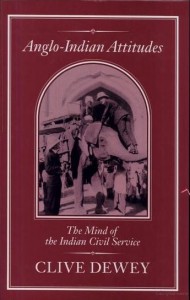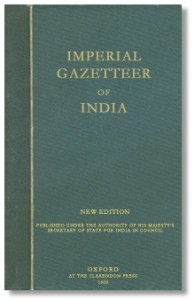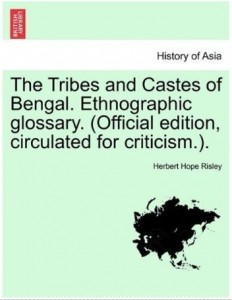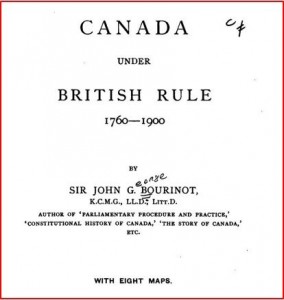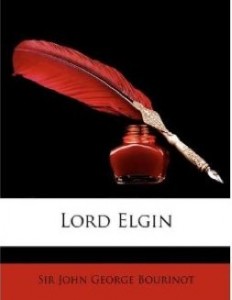On his way to office, Neil’s phone peeped, indicating that he had a message. Since he was driving, he did not look at it, but wondered if it might be from Mabel. He was planning to go on a four day trip into the southern Rockies, and had invited Mabel to join him. But she was not sure if she could get away on Friday.
Neil would not read messages while driving. He decided to wait till he was stopped at a traffic light.
He looked out at the white speckles in the sky to his left that he had noticed through his peripheral vision. They were snow geese – lots of them. As he looked, they flew in to land on the agricultural field at the side of the highway. Snow geese had been a part of Neil’s life ever since he came to the pacific coast of British Columbia. At certain times, their numbers grew as more of the migratory birds arrive from Siberia. Some would then stay back, while the bulk would move on south across the border and fan out into the United States. IN the summer, they would fly back to Siberia. But some of them came in the winter to settle around the Fraser valley and go no further.
Neil guessed it would soon be time for them to return home to their summer grounds to raise chicks. Soon, he would not be seeing any more of them.
He took an exit at Knight’s street and eventually came to a traffic light inside the city of Vancouver.
He remembered to check the message on his phone. It was from Mabel. The message was : HI 6TH OK CALL ME
The text vaguely reminded Neil of the old days when telegrams had to be abbreviated into cryptic sentences to pass important news to far off relatives. He had seen a lot of old telegrams that his parents received, all kept in a box. Most where typed on a thin strip of paper, which then were glued on a telegram form that was printed on pinkish paper. It contained such cryptic messages – announcing births, deaths, marriages, safe arrivals and other events of relatives and friends.
Neil had no trouble deciphering this message though. Since he had Mabel on his telephone’s list of contacts, the message already identified itself to have originated from her. His phone clubbed such messages going back and forth between him and Mabel on a single thread, which made reading through both practical, and interesting.
They were heading into a long Easter Weekend. IT comprised for for continuous holidays from Friday, the 6th of April through to Monday, the 9th.
Neil had been planning to use that period to visit the lower Rockies of British Columbia and Alberta. He was keen to see if Mabel too might join him.
This was a major change in his lifestyle of late.
A sort of a bachelor till this point, he was apt to either plan this trip all by himself, or perhaps with another like minded male friend.
Neil’s interests were not very commonplace among the Indian diaspora. And while he knew some of the local Canadians, he did not know too many that shared his interest exactly, either.
The thing is like this – a lot of Canadians liked to visit the mountains for recreation. Some where for skiing and going along powdery slopes on snow mobile. Neil was not keen on that. In fact he did now know how to ski and had not made a serious effort to learn.
Its not that he disliked the idea of skiing. But he found out, early on – that the industry was geared to generate a lot of money through these activities. So, going to ski was not easy, even in Canada, without spending a lot of money that eventually end up in the hands of corporations. Somehow, the notion of pristine spots on mountains being the property of businesses, and all the gear that one needs to own also costing far higher that they should, put him off this hobby.
He liked nature but liked the right to walk around in marshes and swamps and dry country and mountain slopes that were unspoiled and unmodified by man, as far as possible. Also, he could understand a nominal fee to visit some parks, where the money was used to maintain the area and prevent its degradation. But the spot of skiing, in Neil’s eyes – was a whole different thing that he did not wish to enter.
Hereabouts, near his own home, he liked to put on his hiking shoes and go walk along the Fraser riverbed or the dykes along the shoreline of the Pacific ocean, watching the lowland vegetation. He loved to look at the tireless rounds taken by the northern Harriers as it glided in slow circles above the reed bed in search of food.
It cost him virtually nothing to do that, and he felt closer to nature than in man made institutions to allow him to enjoy a sport that appeared to him to be also a fashion statement that required access to a measure of wealth in order to engage in it. Civilization was geared so one would constantly strive to earn more money, so one could spend it all away in order to make someone else rich.
Neil perhaps still had too much of his upbringing from rural landscapes of Bengal still in him. He had not yet fully merged with Canada. And so, skiing was out.
Snow shoeing was a different issue. It allowed one to walk on stretches of soft snow and usually in back country to see beautiful nature. Going in winter had an added protection in the sense that bears are likely to be hibernating or less active. This, to Neil was an academic and hypothetical issue. He knew Canada had bears and had seen enough black bears up close and Grizzly not so close, to appreciate that. However, he still could not mentally grasp the issue that he might encounter a bear suddenly at some remote spot, where the bear would be startled by him and might make a threatening charge.
Anyhow, snow shoe was something he might have gotten used to, especially since he liked nature.
But somehow, in his few years in Canada, he had not picked up this hobby, while still spending most of his time outdoors, just soaking in the new country. Perhaps he would try that out, along with snow hiking and outdoor living in tents this coming winter, perhaps with Mabel.
Meanwhile, there were still lots of things to see and places to visit, for him. One of them was the Yoho National park and the surroundings. And he was planning a trip there during the Easter holidays.
He had a specific attraction for the Yoho national park. It contained the Burgess mount and the famous fossil beds of Burgess Shale.
Some half a billion years ago – that is over five hundred million years in the past, North America was far from its current location. Neither were all the pieces of the present North America in one pice. But most of the parts lay on its side, at right angle to its current orientation. Further, the central portions of Canada was a shallow sea instead of the current high Rocky mountains. And the time frame was the Cambrian.
This was a period when life had evolved in the ocean, but had not yet invaded land. There was an explosion of diversity among the sea creatures, some of which left no descendant. Most were soft shell creatures. Backbone, or spinal column, had not yet evolved properly. The only hard bodied creature of high population were the trilobites.
And, the soil of the shallow sea bed was a very fine silt. Underwater land slides to deeper depths would occasionally bury some of these soft shelled creatures and the fine silt would preserve their shape. The depth would prevent their bodies rotting fast or being consumed by bacteria. Time and geologic forces would then convert the soft clay into shale and the remnants of the soft shell creatures into very rare fossils. So rare that the Burgess Shale deposit is recognized as one of the best sites for the Cambrian era fossils in the entire planet.

And Neil was interested to go there and check the area, out of curiosity. He knew the fossil beds were not open to public. Also, at this time, snow still covered the slopes. But he still wanted to look around the area.
Mabel had thought she might need to be in town on Friday for something relating to her work in her uncle’s construction business. Therefore, she could not confirm if she was able to go with him.
And now, the cryptic text message on his phone confirmed she was good to go with him on the 6th.
The light turned green. Neil concentrated on the road, and let the iPod read out a book while he navigated the roads from Knight Street on to the downtown area of Vancouver.
He was onto the eighth chapter of Bernard Wood’s book on evolution and came to the issue of multi-regional against our of Africa theories about the evolution of modern humans. The issue of how to define a modern human was being talked about, along with the issue of possible Euro-centrism in the view that not only modern civilization evolved in Europe, but also modern man.
The fact that ancient cave paintings, a sign of advancement in human evolution, was there in Europe and not in Africa, was being used as evidence that Africa did not evolve modern humans.
But, as the book was careful to mention – there were other scientists, some of them from Europe itself, that pointed out two major faults in this theory. The first was – there were cave paintings in Africa. It is just that people were not searching for them in context of human evolution, and these cave paintings were not exactly where human evolution was thought to have originated, in Africa. The second problem was – in order to have cave paintings, a region should have caves in the first place. The region were the species evolved into a more modern form, did not have much caves.
Neil was absorbed in the book and thought back on the issue of the first humans in North America. People were still debating on this. Originally, the notion was that the folks came across the Bering strait at a time when the ice age locked up so much of the water on land glaciers that the corresponding low sea levels exposed vast tracts of land thus providing a land bridge between Siberia and Alaska. Humans might have inadvertently crossed over to North America while following the Wooly Mammoth.
Alternately, they could have island hopped over the Aleutian island range. Or, if Asia was not the best candidate, the could have come from Europe.
Some believe that the ancient stone tools in Spain resemble the early stone tools of humans in North America. Therefore, they say the origin of the first humans in North America could have been Iberian rather than Siberian.
Clovis point stone tools, supposed to be of Asian origin and carried by the early humans – is also under scrutiny. One recent view is that the Clovis point technology might be wholly home grown in North America. This means, humans might have come even earlier, to the continent, and then lived long enough to evolve a new kind of stone technology.
Some recent archaeological finds seem to point signs of the first arrivals to around 50,000 years in the past. This can essentially turn conventional wisdom about the origin and propagation of modern humans on its head.
Neil pulled his car into the underground parking lot.
Modern humans of thirty, forty or fifty thousand years in the past will have to wait. For now, he was heading into the Rockies to have a look at the places that gave rise to the grand parents of modern humans, the first of the multi-cellular ocean creatures of the Cambrian period – over five hundred million years old.
And, Mabel was likely to be with him.






